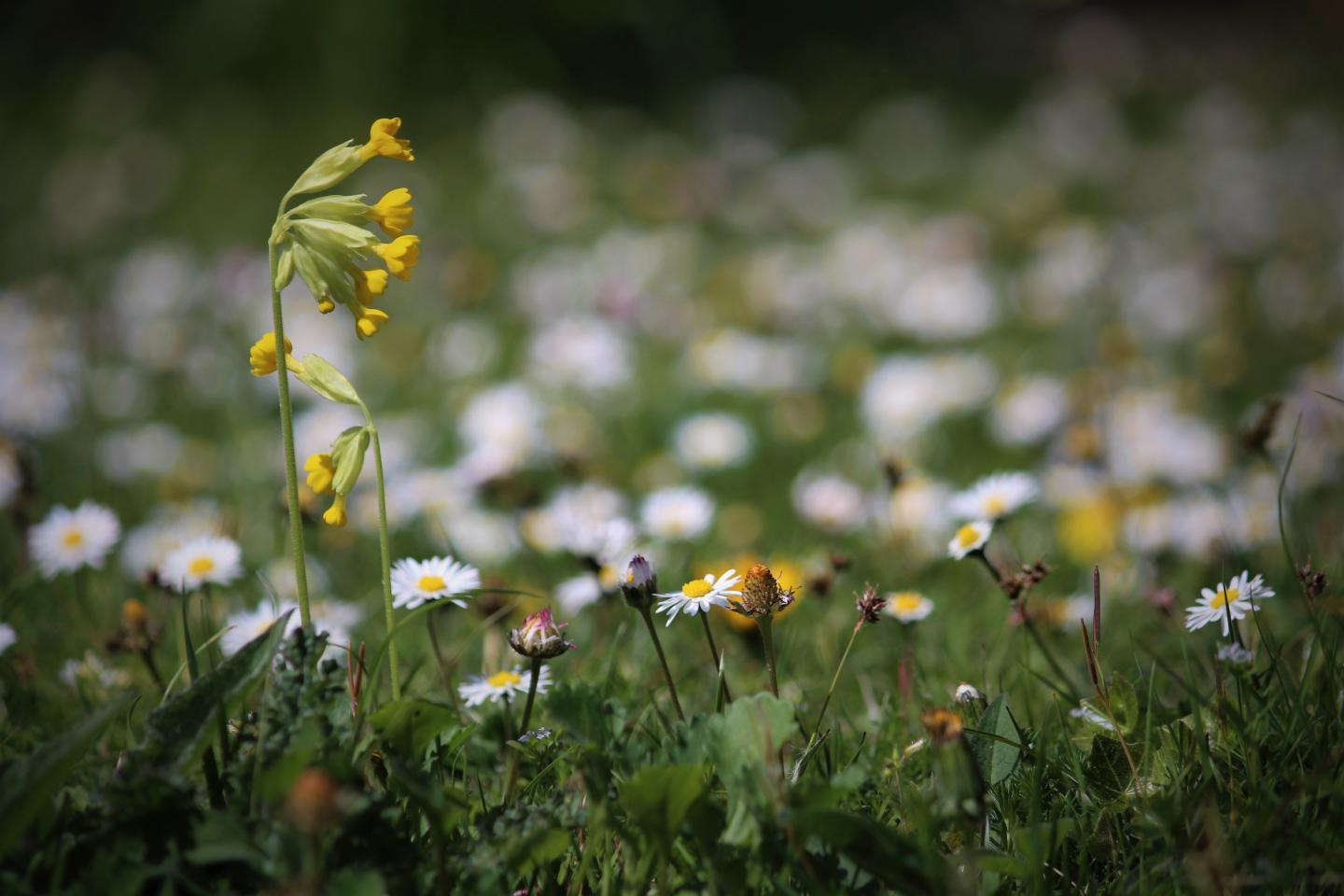Seasonal gaps in the supply of nectar from wildflowers could be leaving bees hungry at times when food is needed most

Credit: Tom Timberlake
For the very first time, researchers from the University of Bristol have measured farmland nectar supplies throughout the whole year and revealed hungry gaps when food supply is not meeting pollinator demand. This novel finding reveals new ways of making farmland better for pollinators, benefitting the many crop plants and wildflowers that depend on them.
Planting wildflower strips is a common strategy for providing pollinators with more food on farmland. These can provide plenty of pollen and nectar for bees to feed on, but most of this food supply is limited to the late spring and early summer when there is already plenty to eat. A new study published in the Journal of Applied Ecology found that early spring (March) and late summer (August-September) are periods of great nectar deficit on UK farmland.
Jane Memmott, Professor of Ecology from Bristol’s School of Biological Sciences and principal investigator, explained: “It’s not just how much nectar there is that matters, but what time of year that nectar is available.
“If a bumblebee queen comes out of hibernation in March and finds nothing to eat, it doesn’t matter how much nectar there is in summer, because she won’t be alive.”
Pollinators such as bees, flies and wasps require a constant supply of nectar throughout the year to stay alive, fly around and pollinate important crops and wild plants.
Tom Timberlake, PhD researcher at the University of Bristol and lead author, added: “By identifying these hungry gaps and finding plants to fill them, we could create a more consistent supply of pollen and nectar, allowing more pollinators to survive through the year.
“Early-flowering plants like willows and dandelions, or late-flowering red clover and ivy could all help to fill the hungry gaps, if we allow them to survive and flower on farmland.”
Pollinators such as bees are critical for the reproduction of most crop plants, including many of our favourites such as strawberries and coffee. Their services are worth up to $500 billion US each year but are under increasing threat as pollinators face worldwide declines. Providing more pollen and nectar rich flowers on farmland is certainly part of the solution. But this new research shows that if we want to be most effective, we must consider the timing of both food supply and pollinator demand.
###
Paper:
‘Phenology of farmland floral resources reveals seasonal gaps in nectar availability for bumblebees’ by T.P. Timberlake, I. P. Vaughan and J. Memmott in Journal of Applied Ecology [open access]
Media Contact
Joanne Fryer
[email protected]




